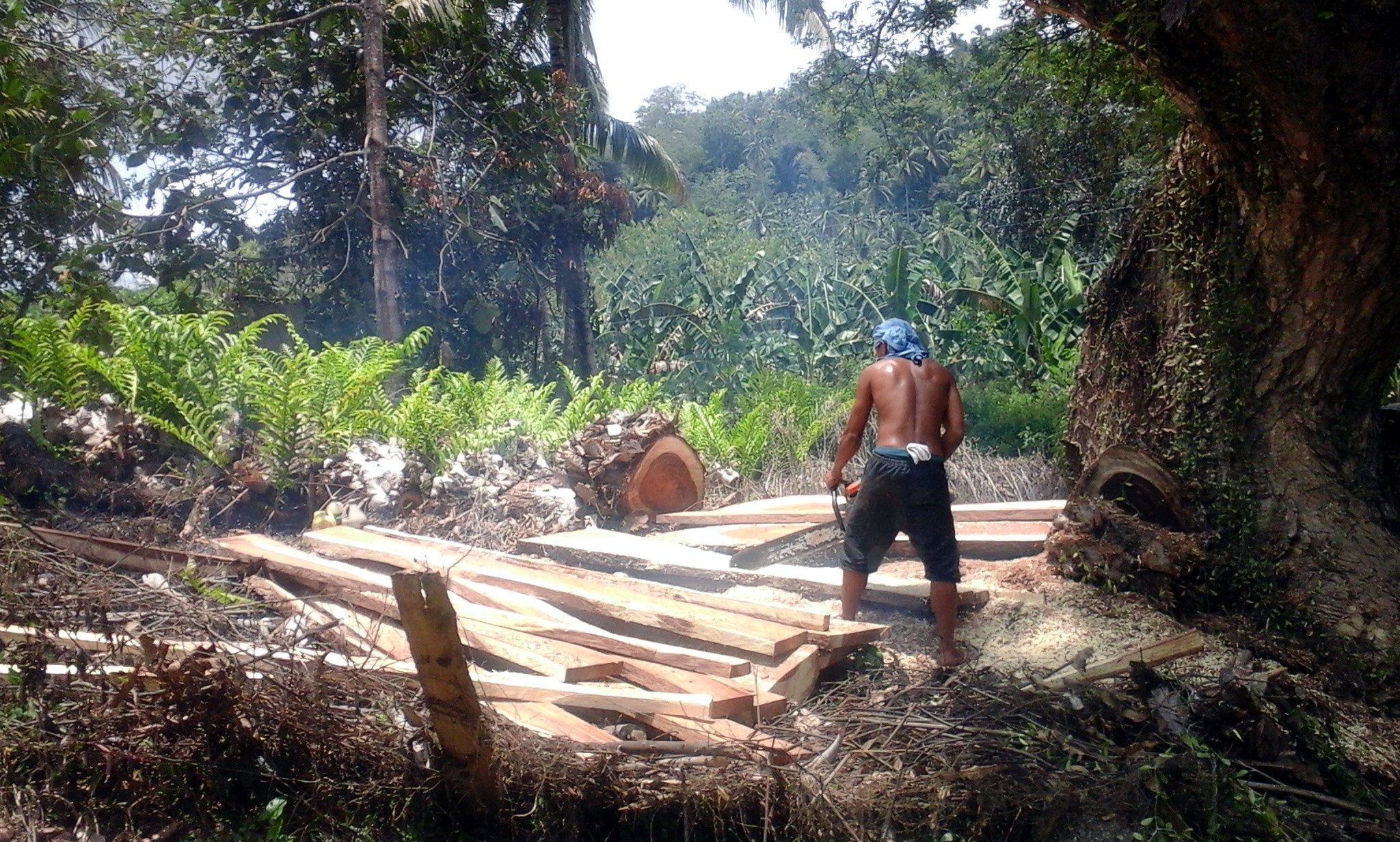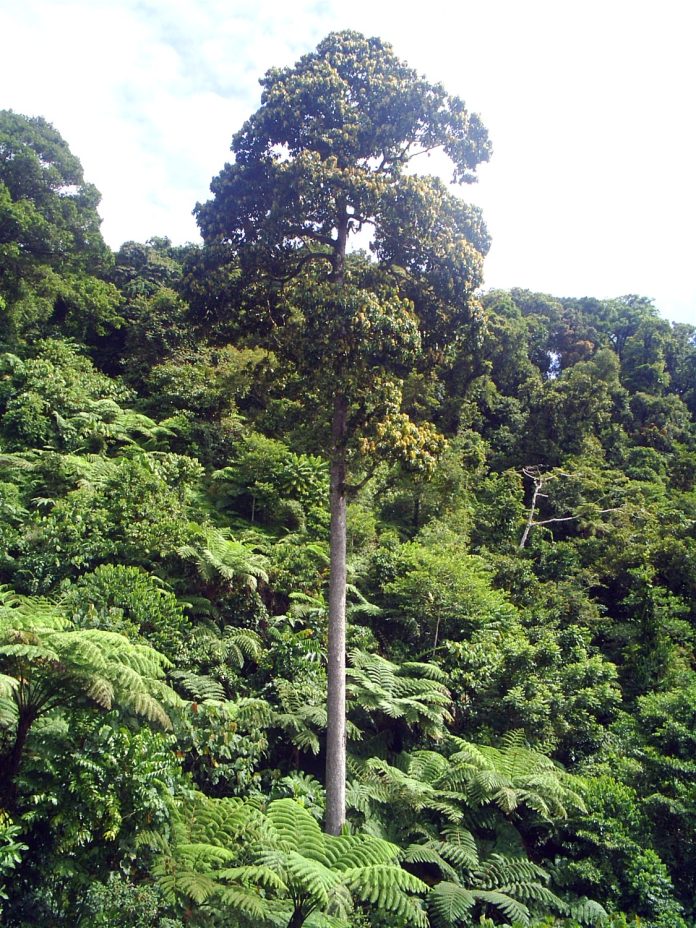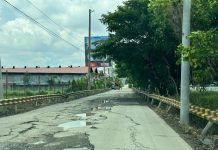Three provinces in Mindanao were among the list of the top 5 provinces in the Philippines which have lost most of their forest cover between 2001 and 2023, according to a recent study by a nonprofit global research organization.
Based on spatial data and satellite imagery, the Global Forest Watch (GFW) platform of the Washington-based World Resources Institute (WRI) said Agusan del Sur, Zamboanga del Norte, and Davao Oriental have lost 128 kilohectares (kha), 65.9 kha, and 56.0 kha, respectively, of their tree cover.
Four more provinces in Mindanao were in the top 15 list. These are Surigao del Sur, 44.7 kha; Davao de Oro, 43.0 kha; Bukidnon, 26.1 kha; and Zamboanga del Sur, 25.6 kha.
However, the GFW clarified that the term “loss” does not necessarily indicate deforestation.
“Loss indicates the removal or mortality of tree cover and can be due to a variety of factors, including mechanical harvesting, fire, disease or storm damage,” the forest monitoring platform stated.
“Tree cover is defined as all vegetation taller than 5 meters in height as of 2000.Tree cover is the biophysical presence of trees and may take the form of a natural forest or plantations over an arrangement of canopy densities,” it clarified. “Tree cover loss includes change in both natural and planted forest and does not need to be human caused.”
The GFW reported that in 2010, Agusan del Sur had 770 kha of forest cover, just next to Palawan which had the most tree cover (1.16 megahectares).
The other provinces in Mindanao which made it to the list of having the most forest cover in 2010 were Bukidnon (484 kha), Davao Oriental (451 kha), Zamboanga del Norte (447 kha), Surigao del Sur (387 kha), Davao del Sur (372 kha), Davao de Oro (358 kha), and Zamboanga del Sur (314 kha).
The GFW – which provides the latest data, technology and tools that empower people everywhere to better protect forests – said that the Philippines, in 2010, had 13.1 megahectares (mha) of natural forest, extending over 62% of its land area.
Thirteen years later, in 2023, the GFW said the Philippines lost 32.4 kha of natural forest, equivalent to 25.6 metric tons of carbon dioxide emissions.
Some years back, the Philippine Congress released a study that said about 123,000 hectares of the country’s forest cover are lost every year. Unless reforestation is started, the study further stated, there would be no forest left in the country by 2036 – that’s exactly 12 years from now.
Then President Benigno S. Aquino III, in his state of the nation address (SONA) in 2011, stated that most politicians use one possible solution – that of tree planting – as a photo opportunity. “They plant trees, but they do not ensure that the trees will remain standing after they leave,” he deplored.
When he was still the head of the Department of Environment and Natural Resources (DENR), Secretary Michael Defensor admitted that “only 30% of reforestation projects succeeded.”
In a Subic meeting of local executives, he told them: “People hardly recognize the economic benefits from protecting the environment. Most sabotaged the program.”
The bluntness seemed to echo an earlier study of the Food and Agriculture Organization, entitled Sustainable Forest Management, which stated: “Most of the (Philippines’) once rich forest are gone. Forest recovery, through natural and artificial means, never coped with the destruction rate.”
When Portuguese explorer Ferdinand Magellan “rediscovered” the Philippines in 1521, forests blanketed 95% of the country. When the Ormoc City, Leyte tragedy happened – which left 8,000 people dead – timber cover was only 18%.
“Where have all our forests gone?” asked Jethro P. Adang, the director of Davao-based Mindanao Baptist Rural Life Center. American President Theodore Roosevelt once said, “A people without children would face a hopeless future; a country without trees is almost as helpless.”
What is causing the nation to drift towards oblivion? In 1978, former President Ferdinand Marcos expressed his concerns, stating, “I have witnessed fortunes amassed overnight from the forest, and it disturbs me to think that many Filipinos seem indifferent to the legacy of forest resources for future generations.”
Veteran journalist Marites Dañguilan-Vitug raised a pertinent question in her article for World Paper, a magazine based in Boston: “Who had the privilege of cutting trees?” She pointed out that it was primarily the affluent and influential individuals residing in major cities. Some even opted to sell their rights to forest concessions, profiting from the land’s resources.
In the past, forest resources helped fuel the country’s economy. In the 1970s, the Philippines was touted the prima donna among world timber exporters. Today, it is considered “a wood-pauper,” to quote the words of multi-awarded journalist Juan Mercado.
Even the forests in the lowlands – mangroves, that is – are not spared from denudation. “Approximately two-thirds of the country’s original mangroves have been lost,” noted Population Reference Bureau’s Kathleen Mogerlgaard.
Aside from logging (whether legal or illegal), the Philippine Clearing House Mechanism (PCHM) said urban construction has also decimated the country’s forest cover. “Forests are cleared to make way for the expansion of urban areas including urban settlements, commercial establishments, roads, bridges, power plants and others that have major impact on forest life,” it explained. “This results in loss of forest area and massive deforestation.”
Another is agriculture, which converts forest areas into agricultural land for growing crops, building farms, ranches and other lands for agricultural purposes. This includes the slash-and-burn farming technique (kaingin).
Some natural causes of deforestation are forest fires, volcanic eruptions, and typhoons. Using data from researchers at the University of Maryland, it was found that forest fires now result in nearly 6 million more hectares of tree cover loss per year than they did in 2001. In 2022, 5% of all tree cover loss were due to forest fires, according to GFW.

The surging population has compounded the problem. There were only 19 million Filipinos, according to the 1940 census. The current population in the country is about 110 million people. “With about 2 million people added to the population every year, the population is expected to double in about 40 years,” said the World Population Review.
“Poverty, lack of jobs and wages, and absence of farm lots in the lowlands have forced some people to invade the forest,” commented the late Senator Heherson Alvarez, who served as environment secretary during the administration of Corazon Aquino.
Spreading cities have also contributed to decimation of forests. “Asphalt is often the last harvest for many forests,” the late National Scientist Dioscoro Umali, a Ramon Magsaysay Award recipient, once said.
The outcome: food crisis, devastation of lands and water resources, biodiversity facing extinction. “The productivity of the country’s agricultural lands and fisheries is declining as these (forest) areas become increasingly degraded and pushed beyond their capacity to produce,” said Mogerlgaard.
The removal of forest cover has bolstered soil erosion in the uplands. “Soil erosion is an enemy to any nation – far worse than any outside enemy coming into a country and conquering it because it is an enemy you cannot see vividly,” reminded Harold R. Watson, the 1985 Ramon Magsaysay Awardee for peace and international understanding. “It’s a slow creeping enemy that soon possesses the land.”
As a result, food production is jeopardized. “The loss of nutrient rich soil reduces crop yields and contributes to the expanded use of chemical fertilizers – a practice that can, in turn, pollute water resources,” Adang said. “Rivers and streams also carry eroded soil to the coasts, where it interferes with fish nursery areas.”
But that’s not all. “Extensive soil erosion has resulted in the siltation of waterbeds, reservoirs and dams, and in the process shortening their productive life spans,” said Dr. Germelito Bautista, of the Ateneo de Manila University.
The Magat Dam reservoir has been reported to have cut its probable life span of 100 years to 25 years. The Ambuklao Dam reservoir has had its life halved from 60 to 32 years as a result of siltation.
A water crisis is looming. “There has been a drop of 30% to 50% in the country’s water resources in the past 20 years or so,” pointed out Dr. Rafael D. Guerrero, a scientist with the National Academy of Science and Technology.
“Rapid forest loss has eliminated habitat for unique and threatened plant and animal species,” Mogerlgaard observed. “At the rate our forests are getting destroyed, many species may no longer be around when we need them,” Adang said.
More than 400 plant and animal species found in the country are currently threatened with extinction, including the Philippine eagle and tamaraw, according to the World Conservation Union.
Studies show that a pair of Philippine eagles needs at least 7,000 to 13,000 hectares of forest as a nesting territory. “The Philippine eagle has become a critically endangered species because the loss of the forest has made it lose its natural habitat,” said ex-president Fidel V. Ramos, who declared the eagle as the country’s bird icon.
Without forest, floods are expected to happen – not only in Metro Manila (which has no forest cover to speak of) but also in other parts of the country where deforestation continues. The “flooding problems,” said Aquino in his 2011 SONA, “are caused by the incessant and illegal cutting down of trees.”
Filipinos are urged to stop cutting trees now and preserve the remaining forests the country has. “We have laid to waste millions of hectares of forest land, as though heedless of the tragic examples of the countries of Africa, the Middle East, and the Mediterranean, where large areas have become barren, if not desertified,” Alvarez said. “If we have not, in fact, reached this state, we are almost at the point of irreversibility.”
Dr. Ernesto Guiang, a forestry consultant, echoed the same concern: “We are now at the eleventh hour. We have to pay attention to the handwriting on the wall with respect to our forests.”







